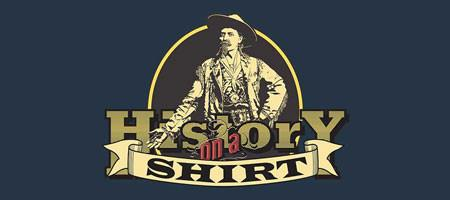Iwo Jima, Wednesday, 21 February 1945:
Some Marines never saw a Japanese soldier on Iwo Jima, though they certainly saw their effects. Hudson saw many Japanese soldiers, but not until the third day or so. That was the time someone pointed out Japanese bodies lying on the ground, and at those words, a Japanese soldier in front of Hudson got up and started to run. Trained for this moment, Hudson shot him. Then another started to run, and the group shot him. It happened so fast that only afterward did they realize they had shot somebody for the first time. For all their training, all their certainty that shooting was the right thing to do and had to be done, there was always the question: in a real battle, do I have the courage? Now Hudson had gained confidence in his weapon and in himself to do the job.

Hudson knew he wasn't supposed to feel good about killing a human being, but he did.
Killing the enemy released frustration at what was happening to fellow Marines. From an action report on Iwo Jima quoted in Iwo Jima: Amphibious Epic by Lt Col Whitman S. Bartley: “Occasionally the tanks flushed out enemy personnel who could be killed by the infantry. This always raised the morale.” Yet good feelings about killing did not automatically create bloodthirsty butchers. Another veteran, quoted in Larry Smith’s Iwo Jima: World War II Veterans Remember the Greatest Battle of the Pacific, showed more resentment for critics at home than for the enemy he shot, reflecting that,
[W]hether I or somebody else did it, I kinda thought maybe I did it, but then it’s nothing to brag about, taking a man’s life. They was there just like we were, probably didn’t know any more than we did. Anyway, that’s life, that’s the way wars are. People that know everything ain’t in the war. They’re sittin’ back somewhere.
Few Japanese were taken prisoner, because doing so was difficult. Unless they were shell-shocked, Japanese soldiers usually killed themselves first. If captured, they begged to be shot; surrendering was both illegal and a shame to the soldier’s family and ancestors. Of the twenty-two thousand Japanese on the island, all three Marine divisions together took only 216 prisoners. Over sixty of these were not even Japanese; they were Korean slaves, who weren’t so eager to die for Japan.
On this third day of battle, Chambers’s battalion was kept in reserve until midafternoon, then moved through heavy enemy fire to fill a gap between the other two battalions. The 100-250 yards gained this day meant finally driving the enemy off the cliff heights and Quarry area. The Marines had taken the area on the first day, but there had still been Japanese around, shooting at the beach. With those shooters gone, Marines landing were no longer under fire from the high ground.
The battalion must have thought he really was trying to get them killed as they struggled to take the cliffs and Quarry. But a gradual, cautious approach would mean more Marines landing on the beach being killed. Without the fighting spirit of Chambers and the men who followed him, the well-protected Japanese position overlooking the beach, intact despite weeks of bombing, would have kept on killing.
At night, the enemy attacked, and enemy fire continued—not only on the front lines, but also on the beaches and rear areas.
The depth of Iwo Jima’s defenses was becoming evident. A cutaway view of Iwo Jima would show the Japanese were in Iwo Jima, not on it. In natural caves of rock soft enough to be excavated by hand tools, the Japanese cut tunnels big enough to run through upright while holding weapons. The Japanese had dug an underground network with more than 750 gun emplacements, five-foot-thick concrete blockhouses, and—under Mount Suribachi—a complete hospital and four stories of tunnels.
As the Marines moved inland, the tunnels, caves, and crevices left them confused about where the enemy was and how many there were. When Marines approached, the Japanese could shoot, disappear through the tunnels, and then reappear behind the Marines. Once in a while, Marines could shoot their enemy from a distance; usually they had to get near a cave to shoot inside. While they approached, they would probably be shot at from nearby—or connected—caves.
The mortar was not a personal weapon, but it was the worst weapon the Marines experienced on the beach. Shells dug themselves into the sand and didn’t explode far sideways. But mortars, which didn’t dig in, would wound or kill anyone within forty-five feet.
One mortar the Japanese fired from a deep cave had a 240mm shell that looked like a fifty-gallon drum flying through the air, a garbage can full of explosives going end over end. The Marines called it the “screaming mimi,” “floating ash-can,” or “bubbly-wubbly.” The first few fired didn’t even land on the island, and the Marines laughed at the inaccurate weapon. As the aim improved, they stopped laughing. The mortar was usually fired at night, with a terrible noise, and though it remained inaccurate, wherever the shell landed, it blew a hole bigger than a twenty-five-yard swimming pool.
Eventually, the Marines found the launching cave, and the mortar quit firing. Japanese prisoners later said setting off this mortar had been as scary as being on its receiving end.
Excerpts are from Fighting the Unbeatable Foe: Iwo Jima and Los Alamos, now republished as a 75th anniversary edition in paperback and Kindle.
